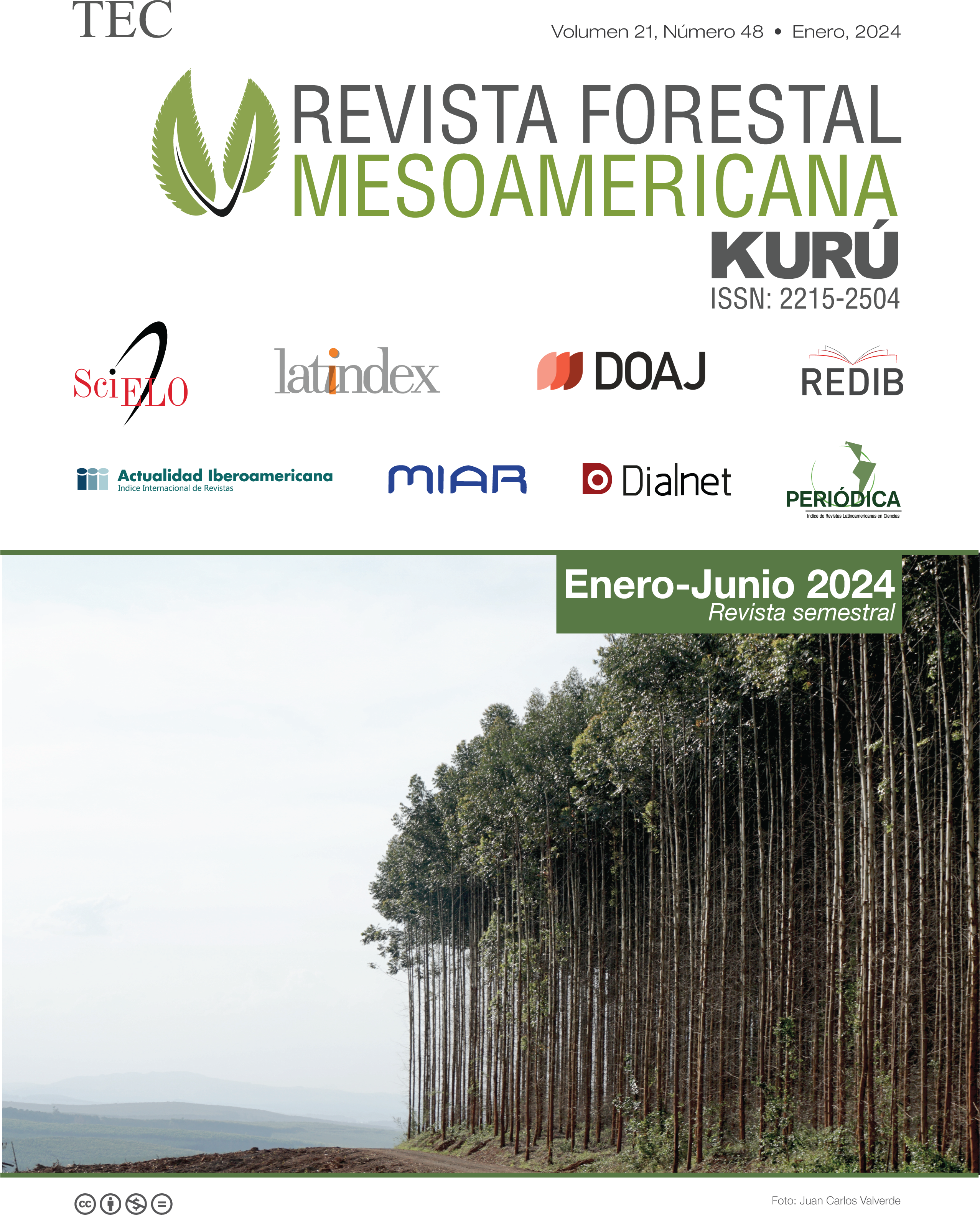Mosses and lichens: Their biological characteristics for their conservation and sustainable use at Cerro de la Muerte, Costa Rica
Main Article Content
Abstract
At Cerro de la Muerte, mosses and lichens are extracted for commercial use, and despite their socioeconomic and ecological importance in the high-altitude towns and ecosystems of Costa Rica, few studies have been assess their biological importance. In this study, some of the biological characteristics of mosses and lichens were evaluated to improve their conservation in Cerro de la Muerte. Two sites were selected, one disturbed (pasture) and one not disturbed (protected area), where transects and subplots were established to determine the diversity of species in both sites. In these same transects, samples of mosses and lichens were collected to determine the relative growth rate (TCR) and water retention capacity. A dominance of the moss Leptodontium sp. for the distrubed site, while in protected site the dominant moss is Sphagnum sp. The highest TCR and water retention capacity was found in Sphagnum sp. with 70%, and 26% Leptodontium sp. Therefore, to conserve the mosses and lichens in the highlands of Cerro de la Muerte and the ecosystems that depend on these organisms, it is important to keep harvesting mosses of the genus Leptodontium sp. for commercialization, since this will control its dominance in the disturbed site, and the second in dominance in the protected site. This species has a high five-month TCR and a low water retention capacity.
Article Details

This work is licensed under a Creative Commons Attribution-NonCommercial-NoDerivatives 4.0 International License.
Revista Forestal Mesoamericana Kurú is licensed under CC BY-NC-ND 4.0
Al enviar un artículo a la Revista Forestal Mesoamericana kurú (RFMK), los autores ceden los derechos patrimoniales a la editorial de la RFMK una vez su manuscrito haya sido aprobado para publicación, autorizando a la RFMK a editarlo, reproducirlo, distribuirlo, y publicarlo en formato físico y/o electrónico. La titularidad de los derechos morales sobre los trabajos objeto de esta cesión seguirá perteneciendo a los autores.

